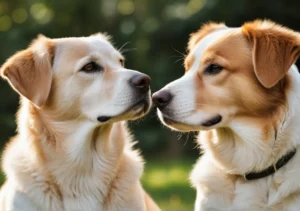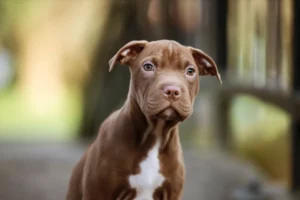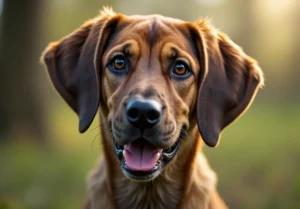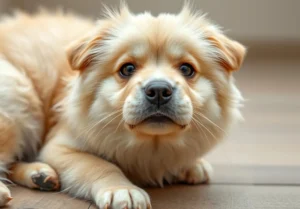Cats have long been associated with females, but have you ever wondered why? Let’s explore the intriguing reasons behind this common connection.
Cats are often linked to females due to their historical association with femininity and their portrayal in various cultures and myths. Cats have been depicted as mysterious, independent, and nurturing creatures, qualities commonly associated with women. Additionally, the role of cats as companions to women throughout history has solidified this connection.
Historical Origins of the Association
Cats have long been associated with females throughout history, dating back to ancient civilizations. In ancient Egypt, cats were highly revered and associated with the goddess Bastet, who symbolized protection, fertility, and motherhood. Cats were seen as sacred creatures, often depicted alongside women in artwork and seen as companions to women in their daily lives.
Moving through time, during the Middle Ages in Europe, cats were unfortunately linked to witchcraft and the supernatural. Women who owned cats were sometimes accused of being witches, further solidifying the connection between cats and females in a negative light. However, this association also highlights the deep bond between women and their feline companions, even in times of adversity.
In more modern times, cats have continued to be linked to femininity in various cultures around the world. Their graceful and independent nature often aligns with traditional gender roles and stereotypes, leading to the ongoing association between cats and females.
Cultural Depictions in Art and Literature
Art and literature have played a significant role in reinforcing the connection between cats and femininity. Throughout history, cats have been portrayed in various forms of art, symbolizing different aspects of women’s lives. In paintings, sculptures, and literature, cats are often depicted as mysterious and alluring creatures, mirroring the complexity and depth of women themselves.
From famous literary works like “Puss in Boots” to classic paintings showcasing elegant women with their feline companions, cats have been a recurring symbol of femininity in art and literature. Their agility, grace, and independence are often mirrored in the portrayal of female characters, highlighting the shared characteristics between women and their beloved cats.
Moreover, the prevalence of female authors and artists who have depicted cats in their work has further solidified the association between cats and females in popular culture. Through their creative expressions, these women have contributed to the enduring image of cats as companions to the female experience, shaping the way we perceive and celebrate the bond between women and their feline friends.
The Bond Between Women and Cats
The special bond between women and cats has deep roots in history. Cats were often seen as companions to women, especially those who lived alone or in secluded spaces. The nurturing and caring qualities typically associated with women are also attributed to cats, making them a natural fit for one another. Over time, this bond has only strengthened, with many women finding comfort and companionship in their feline friends.
Cat Stereotypes and Gender Norms
Stereotypes and gender norms play a significant role in the perception of cats as feminine animals. Throughout history, cats have been associated with traits traditionally considered feminine, such as grace, elegance, and independence. These qualities have further solidified the connection between cats and women in popular culture. Additionally, societal expectations of women as nurturing and caretaking beings have reinforced the idea that cats are best suited for women. It’s essential to recognize and challenge these stereotypes to create a more inclusive and accepting view of both cats and women.
Unique Insight: Gendered marketing has also played a role in perpetuating the association between cats and females. With products like cat-themed apparel and accessories being marketed predominantly towards women, the connection between the two has only been further reinforced in consumer culture.
The Psychological Connection
Women’s preference for cats over dogs can be traced back to various psychological reasons. One key factor is the stereotypical association of cats with independence and mystery, qualities often attributed to women as well. Cats are known for their aloof yet endearing nature, reflecting the complexity of female personalities. Additionally, studies have shown that women tend to be more empathetic and nurturing, traits that align well with caring for a cat. This psychological connection between women and cats can explain why women are more drawn to these feline companions than men, influencing the overall association between cats and females.
Cats as Symbols of Empowerment
Throughout history, cats have been revered as symbols of empowerment for women. In ancient Egypt, the goddess Bastet, often depicted as a lioness or domestic cat, was associated with fertility, protection, and the home. This representation of a powerful female deity in feline form set the tone for cats being seen as symbols of femininity and strength. Fast forward to modern times, where the concept of the “cat lady” has evolved from a derogatory term to one of empowerment and self-sufficiency. Owning and caring for a cat is no longer seen as a sign of loneliness, but as a way for women to assert their independence and nurture their own well-being. This historical perspective on cats as symbols of empowerment has solidified the enduring association between cats and females.
Key Insight: An interesting aspect of the association between cats and women is the rise of social media influencers who prominently feature their feline companions. These influencers often project an image of confidence, creativity, and self-expression, further reinforcing the link between cats and female empowerment in the digital age.
The Future of the Connection
Looking ahead, the association between cats and females is likely to continue evolving in the modern world. As society progresses and gender norms shift, we may see a more diverse range of individuals, regardless of gender, embracing the companionship of feline friends. While the historical and cultural ties between cats and females are deeply rooted, openness to change and reinterpretation can lead to a broader acceptance of this bond among all genders.
Considering the psychological factors that contribute to the connection between cats and females, it is essential to recognize the emotional support and companionship that cats provide. As more people prioritize mental health and well-being, the therapeutic benefits of owning a cat may become more widely acknowledged and appreciated. This shift in perception could lead to a more inclusive understanding of the bond between humans and felines.
Furthermore, as technology continues to shape our interactions and lifestyles, the online presence of cats, particularly on social media platforms, has contributed to a broader cultural fascination with these animals. This digital landscape has the potential to redefine and expand the association between cats and humans, transcending traditional gender roles and paving the way for a more inclusive and diverse representation of cat owners.
In embracing the future of the connection between cats and humans, we have the opportunity to celebrate the unique bond that exists between these remarkable creatures and the individuals who care for them. As we move forward, let us embrace diversity, redefine stereotypes, and recognize the universal appeal of these beloved companions.
The Role of Evolution
When considering the enduring connection between cats and females, it is crucial to explore the role of evolution in shaping this relationship. Through centuries of coexistence, cats have evolved alongside humans, adapting to domestic life and forming close bonds with their human companions. This evolutionary history has fostered a unique dynamic between cats and females, characterized by mutual understanding and companionship.
From a biological standpoint, the nurturing instincts commonly associated with females may contribute to their affinity for cats. Evolutionarily speaking, the caregiving role of females in raising offspring may extend to their interactions with animals, including cats. This innate tendency towards nurturing behavior could explain why females are often drawn to the companionship of these independent yet affectionate creatures.
Moreover, the evolution of cats as skilled hunters and protectors of human settlements has further solidified their role as valued companions to females. As early humans domesticated cats for their pest control abilities, a bond formed between these animals and the individuals, particularly females, who cared for them. This historical coevolution has left a lasting imprint on the connection between cats and females, highlighting the intricate interplay between biology, behavior, and companionship.
In exploring the evolutionary roots of the association between cats and females, we gain a deeper appreciation for the complex interconnections that have shaped this enduring bond. By acknowledging the evolutionary history that underpins this relationship, we can better understand and celebrate the unique partnership between humans and cats.
Alex, a passionate animal lover, has experience in training and understanding animal behavior. As a proud pet parent to two dogs and three cats, he founded AnimalReport.net to share insights from animal experts and expand his knowledge of the animal kingdom.




